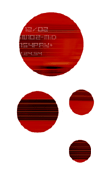

 |
 |
scientific program electroacoustic musics around set theory music analysis tools musicnetwork workshop professional week ircam forum workshops free software for music international multichannel sound forum performing arts and technologies dance and new technologies access to sound heritage thematic evenings demonstration stands artistic program set theory concert music in creation concert cursus concerts opera "one" sound installations open house weekend technologies gallery conferences demonstrations workshop-performances workshops and films ircam laboratories linux install-party concert distribution on internet associated events resonances night at glaz'art émilie simon at la cigale suguru goto reseaunances guided tours of ircam and the multimedia library resonances in pictures resonances 2002 
|
CÉLESTIN DELIÈGEAn alternative to Set Theory : prospecting of a spectral figuringAbstract"It is an error to believe that one can deduce from the rules of composition of phenomena like that of the series of the harmonics" (Dahlhaus, 1985 : 76). Being opposed to Hindemith's theory, the author was probably not wrong. Perhaps even is this objectively an impossibility ? But before the rules of composition, there are the inherent grammatical rules in a language, and the obstacle then seems to be able to be removed. Acoustic resonance is undoubtedly the universal and most authentic principle to which the music can resort whatever its mode of existence. Even a community who is not aware of it cannot avoid it. The Series was created to found an atonal order. It was felt and claimed, from the very start, as a unifying principle, a synthesis factor giving to each sound an equal statute, abolishing - one said - the concepts of consonance and dissonance. The consequence was that quickly the harmony was as in a state of weightlessness, result of an absence of hierarchy (Webern). When a composer wished to restore a hierarchy, he had to create it by personal process. Much has been written about the composer creating his material. It gave rise to detailed genetic analyses (Piencikowski, Kobliakov, Decroupet), analyses generally forcing to do a meticulous consultation of drafts. Can't one think that we can state however of atonality as tonality and that it can be subjet to the fate that Riemann held for the tonal harmony ? The sound spectrum may today suggest that rather than abolishing consonant and dissonant the atonal harmony includes them. It was Pousseur's thought, already thirty years ago, but by aiming at a prospective appropriation and a retrospective one in direction of the history of the harmony. Such is not my goal ; I propose today a theory which aims at "Riemannizing" the chromatic atonal harmony, i.e. in order to provide the aggregate in any atonal music with a fundamental and, from there, to quantify this harmony as done before with the continuo. The theory of Riemann's harmony was a dawn in relationship to Schenker's one ; may this moment, also be considered one day as a dawn ( ! ?). |
|||||||||||||||||||||||||||||||
 |
Organization Committee Copyright Ircam-Centre Pompidou 2003 |